Joanna Gaines showcases her favorite exotic indoor plants on 'watering day' – and they're so easy to grow
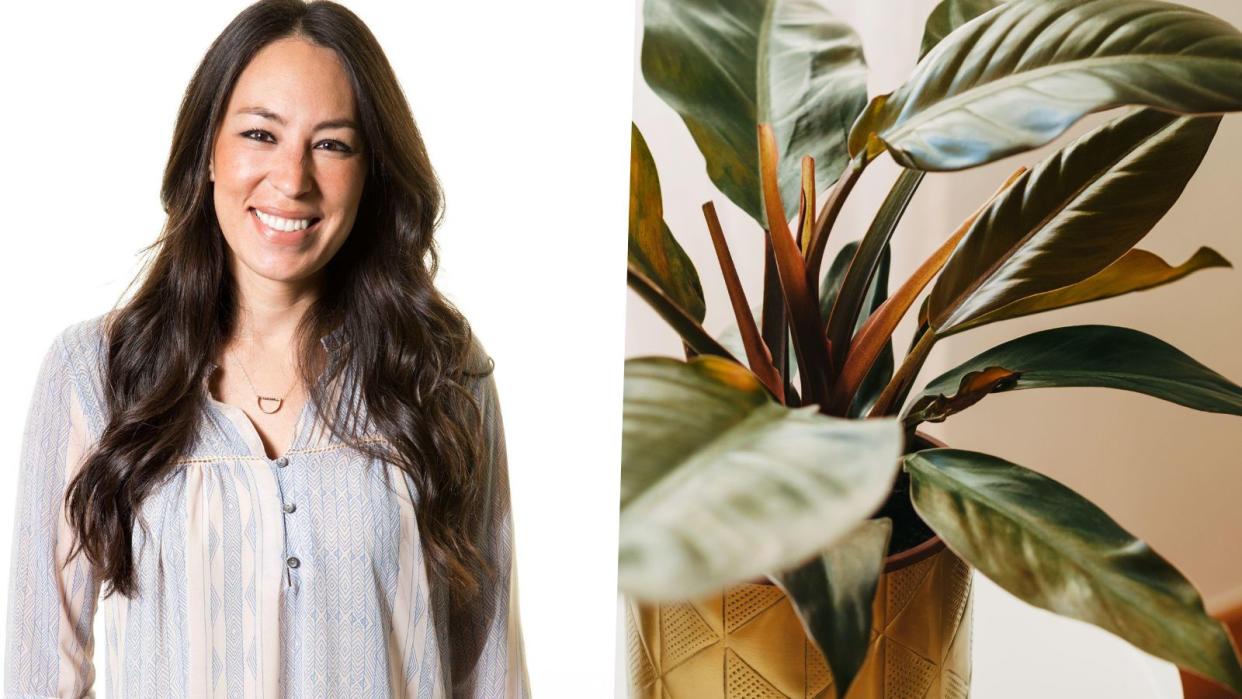
Joanna Gaines' recently took us on a tour of her living room on Instagram, showing us her collection of gorgeous indoor plants. While the Magnolia maven's flair for interiors is what usually catches our eye, her large-leaved and somewhat exotic house plants leave us wondering: has Joanna redefined plant trends for living rooms?
'I got these plants and vintage vessels from my sister @fernysretroplantshop about a year ago. Watering days are my favorite [because] it's fun to see how each plant grows a little more and more each week,' comments Joanna. We can see why she enjoys 'watering days', as she calls them – gardening therapy is known to be good for mental health.
Joanna hosts nine different plants of all different shapes and sizes in her living room, all displayed in vintage style containers, and adorning her fireplace, tables and benches. They bring life, texture and color to the otherwise neutral room, and it's a look that's really worth emulating. Each plant has different watering needs, though, so we asked our house plant experts for their take on Joanna's plants, and how often you should water houseplants?
A post shared by Joanna Gaines (@joannagaines)
A photo posted by on
1. Staghorn fern
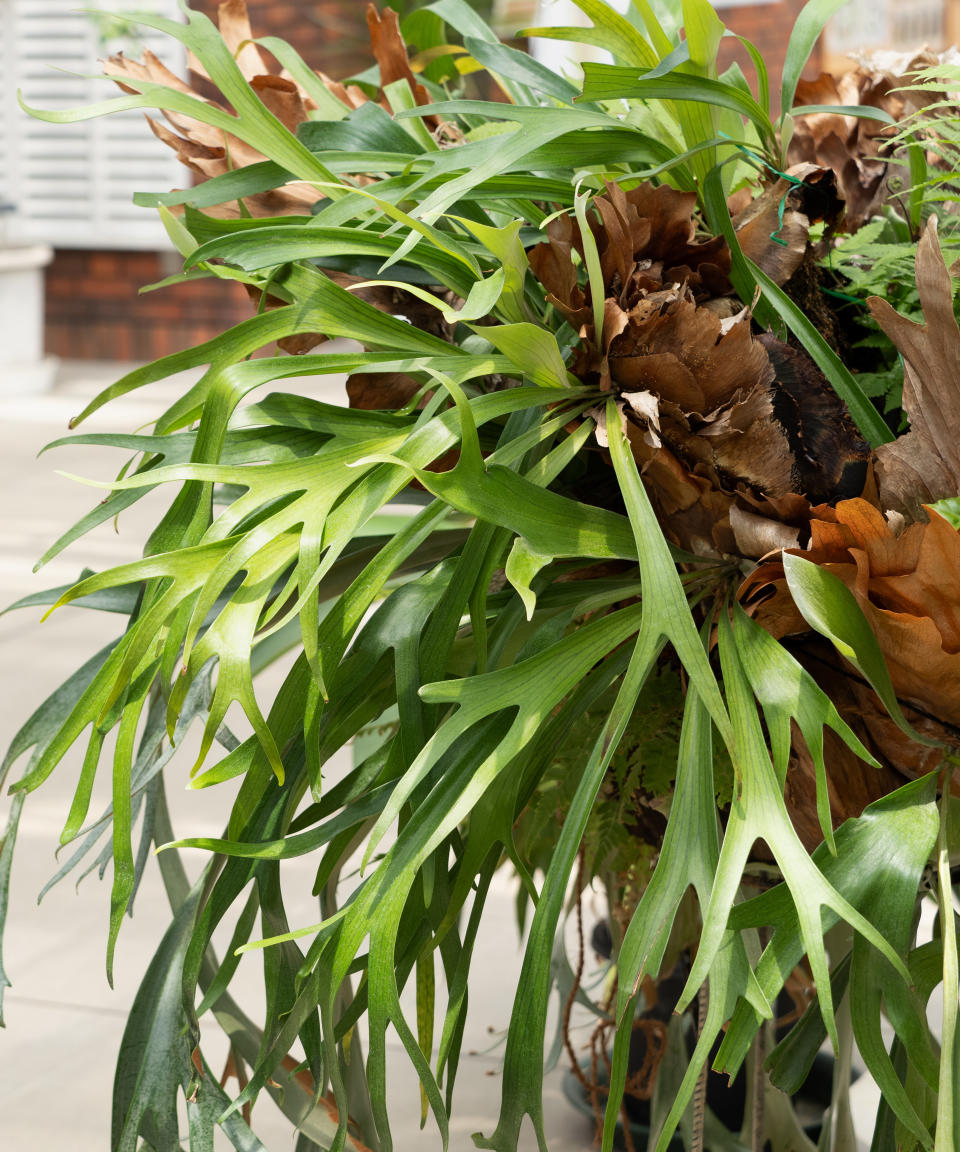
Staghorn ferns get their name from their antler-like leaves, but unlike antlers, these plants don't fall off after a quick growing season, rather they are slow growing and can get to be very large when mature.
We've already highlighted Joanna Gaines's love for staghorn ferns in January 2022 when Joanna shared with her Instagram followers her 26 year old plant (see below). Joanna informed viewers that staghorn ferns are fans of banana peels, since putting a peel in the fern's soil can provide the plant extra potassium.
This plant has quickly surged to popularity, and its versatility may be the reason why. This plant is unusual since it can be displayed in more ways than just a pot or a basket...
A post shared by Joanna Gaines (@joannagaines)
A photo posted by on
One unusual fact you may not know about staghorn ferns is that they are epiphytic, meaning they grow on other plants or objects. One common way staghorn ferns are grown is mounted on wooden planks, which can even be hung up. Although young ferns should be first grown in a moist potting mix, when they are growing towards maturity then can be mounted.
To mount a staghorn fern, remove it from its pot and break off the bottom third of the soil from the plant's roots. Next, place the staghorn on the middle of a wooden plaque and position it with the leaves face up. Use sheet moss with water and wrap the base of the plants roots to the plaque by using string and nailing it into place.
How often to water: Staghorn ferns should be watered weekly in summer and every two to three weeks in winter.
You can find staghorn fern at Amazon
2. Dragon tail plant
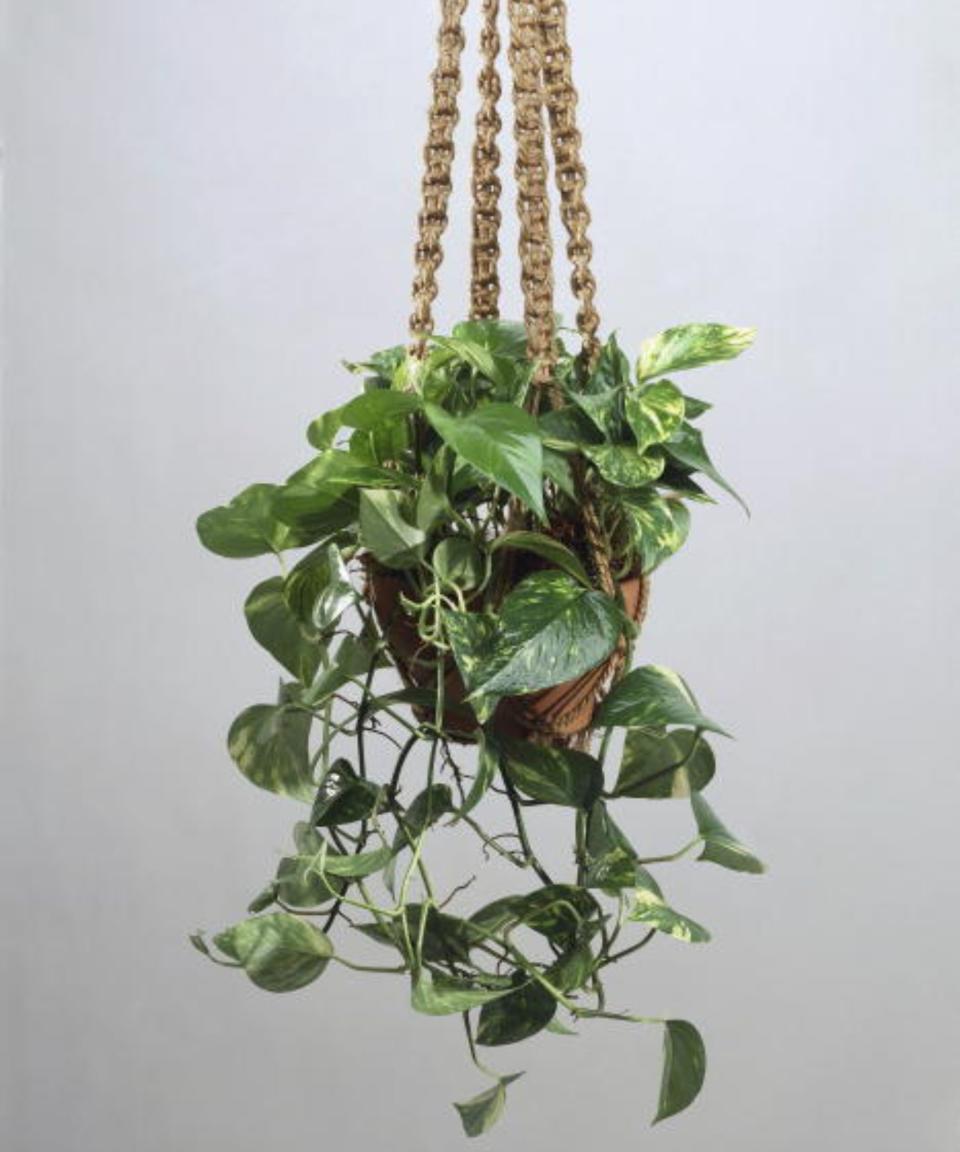
Dragon tail or pothos plant is an Australian plant that is best grown indoors.
You can leave dragon tail plants to grow over the sides of the pot and hang down, which may be a great way to add interest to shelves, or they can climb, so you could consider some climbing plant support ideas. Dragon tail plants are fast growers that reach around 3ft on average, but can also spread up to 9ft in a hanging basket.
How often to water: Water your dragon tail when the first few inches of the soil is dry (not moist), and only water it a small amount.
3. Monstera lechleriana
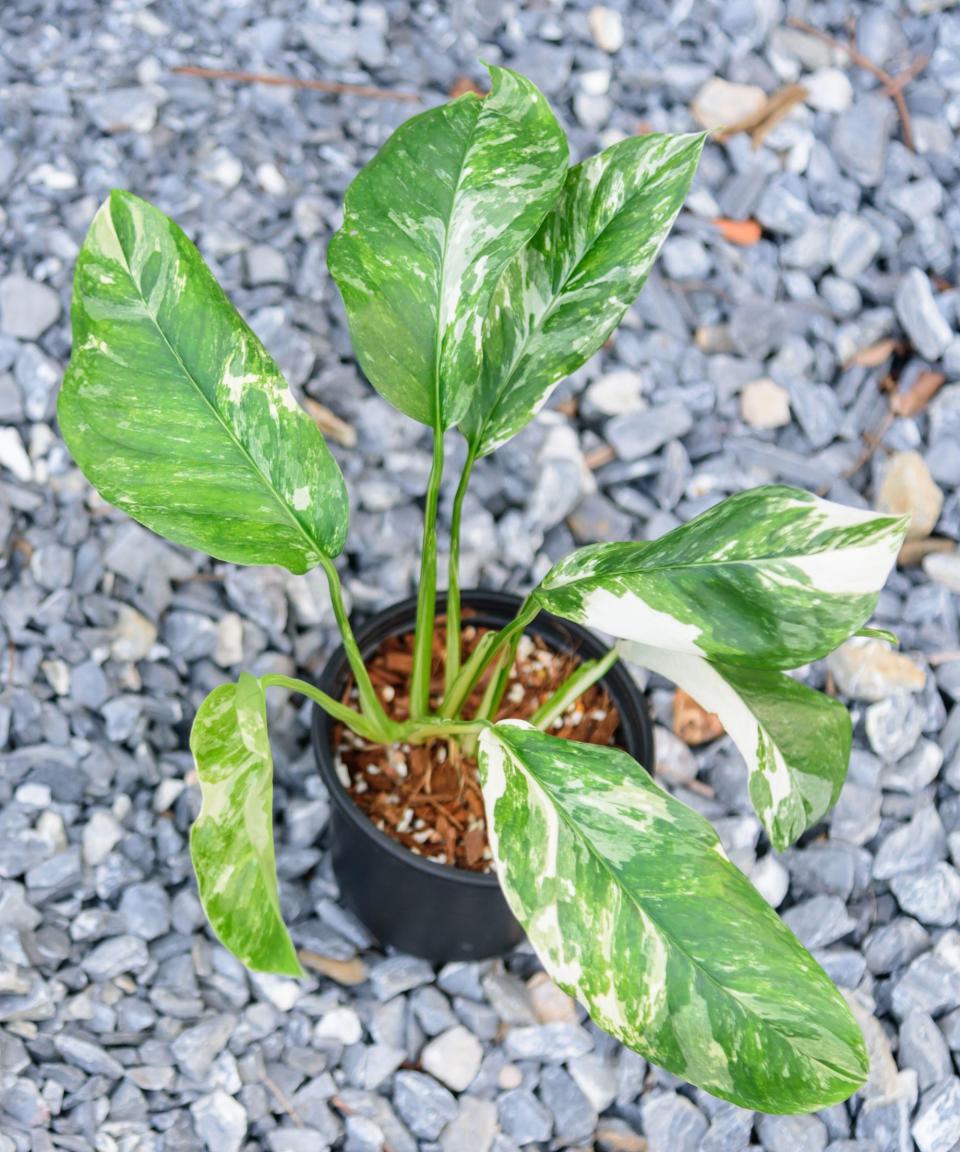
Monstera lechleriana are a rare variety of monstera that are identifiable by their 10in leaves with rounded holes near the central rib of the leaf. This plant grows plenty of leaves and can can grow up to around 7.5ft. These variations of monstera are hard to find due to their rarity and are expensive, but other monstera can be easier to get a hold of. This plant originates from Panama, Venezuela and Bolivia.
Joanna features her monstera lechleriana plant on a wooden bench behind her couch, and besides being one of our favorite easy indoor plants, you can propagate monstera easily. By doing so you can create a money-saving cycle of growing and re-growing new monstera lechleriana plants.
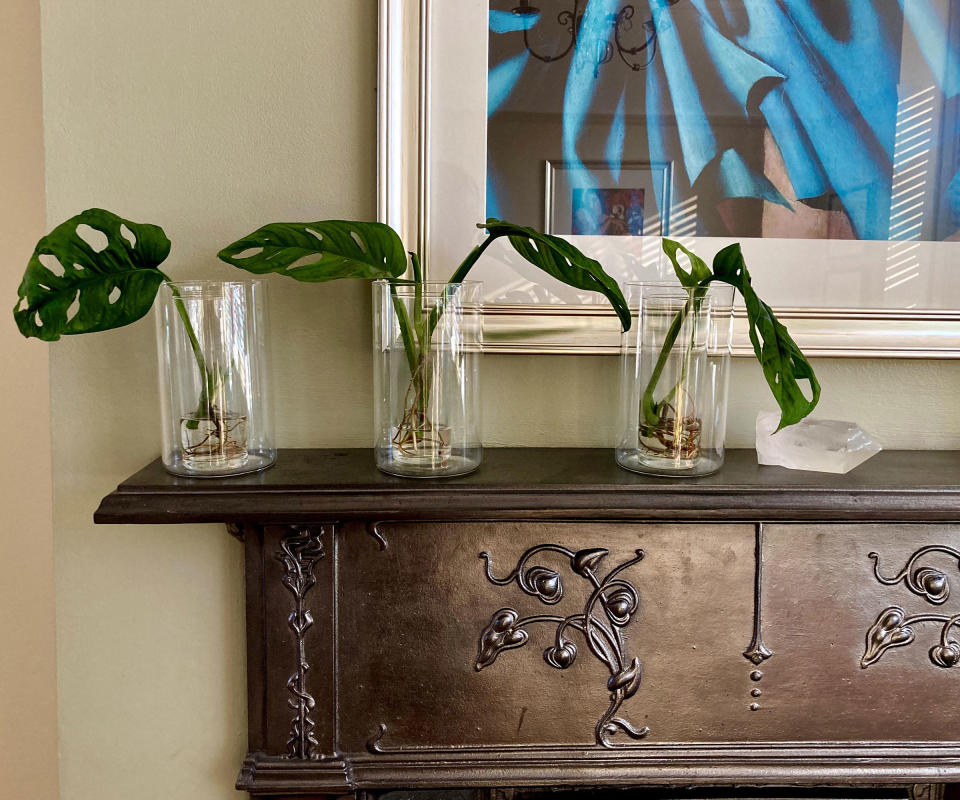
They don't enjoy direct sunlight since it can lead to monstera leaves turning yellow and discoloring, but they still thrive in bright places.
How often to water: The thicker leaves of these plants mean they are accustomed to drier conditions than other monstera species, making them lower maintanance. You can water your monstera lechleriana at most once or twice a week, but as a general rule they will be thirsty when the top three to four inches of soil is dry. Ideally the soil should stay moist. They should be watered until the water drains out the bottom of the soil, ensuring all the potting mix is wet.
You can find Monstera Deliciosa Plant at Amazon
4. Red congo philodendron
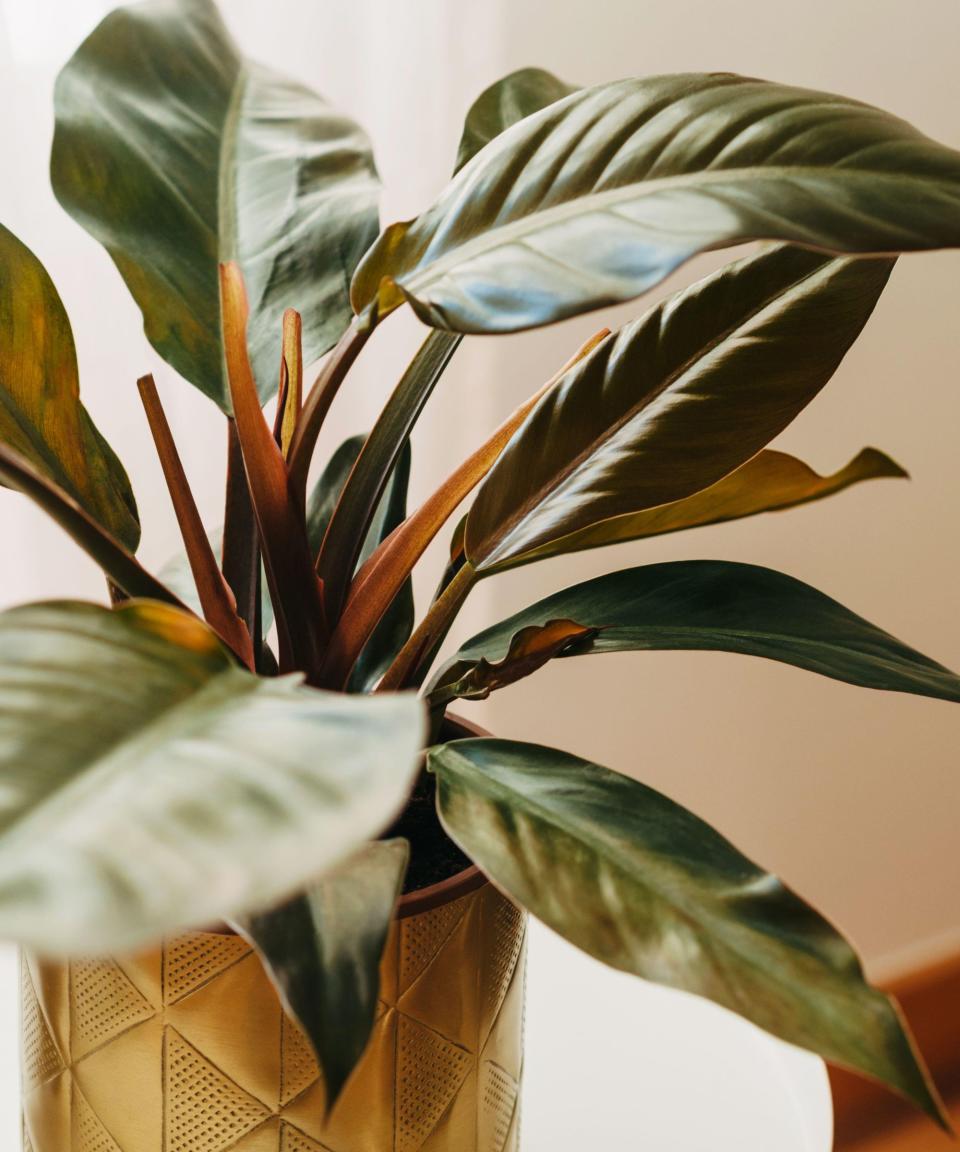
On Joanna's fireplace, she shows off her red Congo philodendron, another tropical plant that is perfect for indoor growing. The leaves of this plant are typically green with a red tinge.
These plant are not climbers, they stand alone on a single stalk, making them low maintenance growers, which reach just under 3ft tall
These plants are best placed in a location that receives indirect sunlight. In colder places, a red Congo philodendron may need some fluorescent lights in winter to stay healthy and thriving.
How often to water: Red Congo philodendron plants need more water than other philodendron species, which are used to a bit more drought. However, its watering needs depends on a number of factors such as the humidity and heat in a room. If the top 2in of the soil is dry, it should be watered. This will mean on average they should be watered once a week.
You can find Rojo Congo Philodendron at Walmart
5. Rubber plant
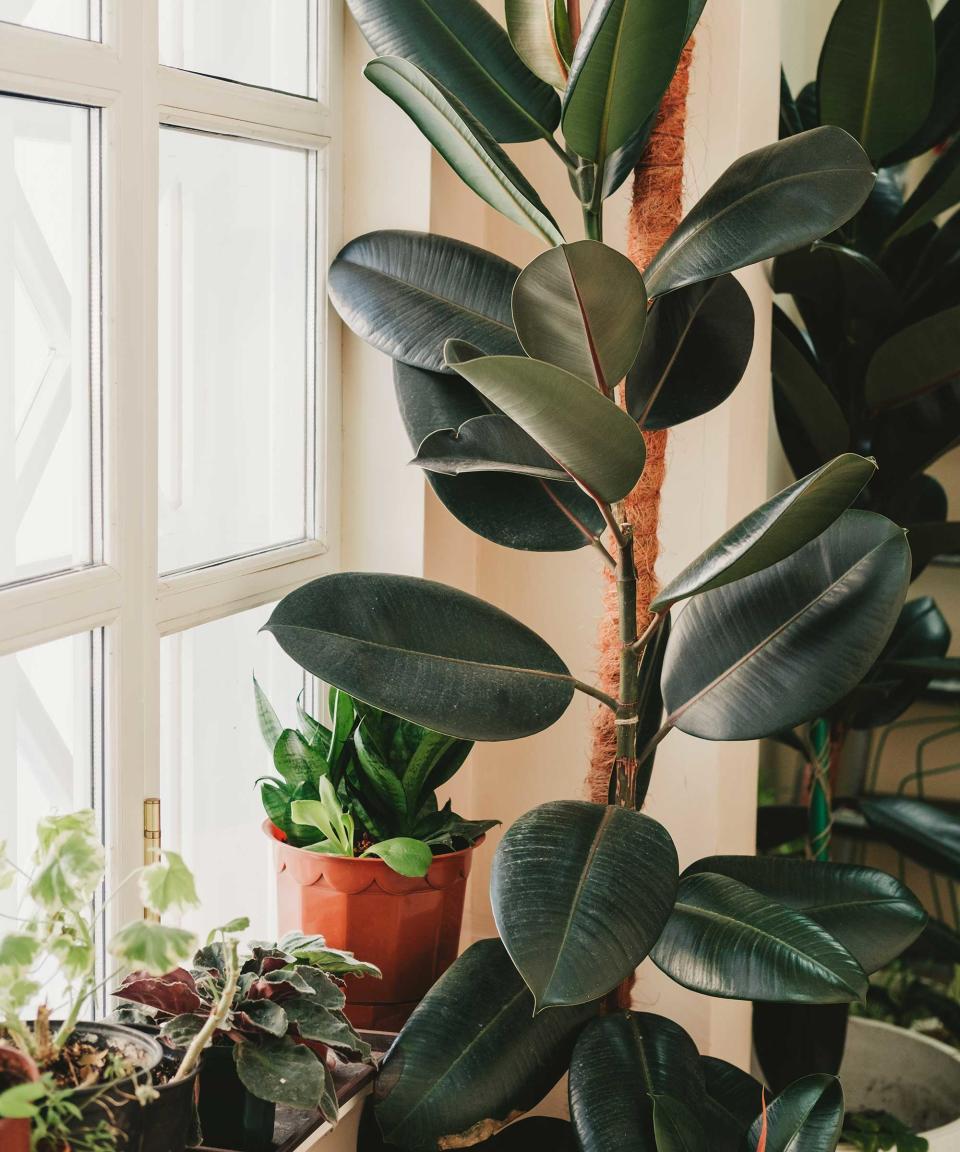
Joanna showcased her large rubber plant, which we argue is one of the best tall indoor plants, on account of its low maintenance nature and glossy, bold leaves. These plants can grow up to 30ft outdoors, too.
Rubber plants can grow in medium or indirect sunlight. Another pro of the rubber plant is it is an air-cleaning indoor plant that, like the monstera lechleriana, can be propagated to create more. Knowing how to propagate a rubber plant is a simple way to add more greenery to your indoor space without spending any money.
Janey Goulding, Assistant editor at Amateur Gardening provides some top tips for maintaining rubber plants: 'Wiping rubber plant leaves doesn't just make your plant look glossier – it is also essential for maintaining healthy photosynthesis levels. Rubber plant leaves can get dusty quickly, so wipe them once a week with a damp cloth and lukewarm water.
'Rubber plants appreciate being repotted every year or two. Repotting and staking help to encourage and support new growth. But don't move plants into containers that are dramatically bigger. The diameter of a new pot should be an inch or two wider than the previous container.'
How often to water: Rubber plants only need to be watered every one to two weeks, and don't mind if their soil dries out between watering sessions, since they have a high drought tolerance, but try to keep the soil consistently moist.
You can find Costa Farms Burgundy Rubber Plants at Amazon
6. Sweetheart hoya
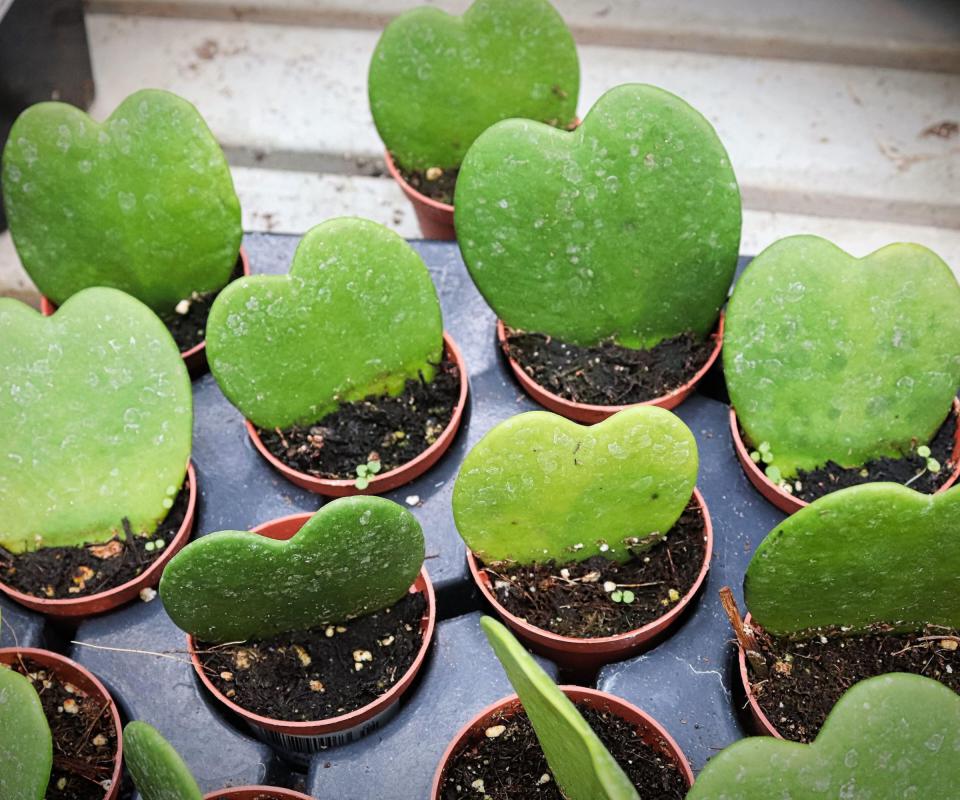
Joanna's sweetheart hoya plant, featured on her living room table, was in my opinion the most eye-catching plant displayed in the video, because of its interesting shape. The appropriately named sweetheart hoya plant has sparsely growing, heart-shaped, thick leaves and vines. This plant is a native to Cambodia, Thailand, Malaysia and Vietnam.
These plants are easy to propagate, and even produce fragrant blooms that look like stars. Truly, this plant will stand out from all the other tropical plants.
Janey Goulding suggests, 'These plants need a succulent-specific compost mix with ample drainage, ideally containing fine bark. If you have to use a potting mix, blend in some sand and perlite to assist with drainage and aeration, which is key for happy hoyas!'
How often to water: The leaves of this succulent can store water during period of droughts. Sweetheart hoyas only need to be watered once every couple of weeks. Janey Goulding advises that 'it's a good idea to let the compost dry out completely between watering. If leaves turn yellow, this could be a sign of waterlogging or overwatering. And try to use rainwater rather than tap water.'
You can find Hoya 'Sweetheart' at Walmart
7. Peperomia hope

'Peperomia hope is a small, cute-looking houseplant that is relatively easy to care for', says Ruth Hayes, Gardening Editor at Amateur Gardening.
Peperomia hope plants have a light green full foliage which grows in groups of three to four, making them the perfect desktop or shelf plants. Peperomia hope are also one of the best pet-safe indoor plants.
Ruth continues, 'The best compost is open and free-draining, so a mix of potting soil, orchid bark and grit is perfect. It should be kept damp, but not sodden, in spring and summer but allowed to dry out between waterings in fall and winter.
'They are easy to propagate. Simply remove a few of the leaves and insert their cut ends in damp potting soil. Baby leaves, or "pups" will grow from the base of the leaves.
'A quicker way is to remove a stem from the parent plant, strip off the bottom two to three leaves and insert it in water. Keep it somewhere warm and light, refresh the water once a week and roots will soon develop. The new plant can be potted up in seed potting soil when the roots are 2-3in long.'
How often to water: Water peperomia's every one to two weeks, and let the compost it's planted in completely dry before watering.
You can find peperomia hope at Walmart
8, Jungle boogie philodendron
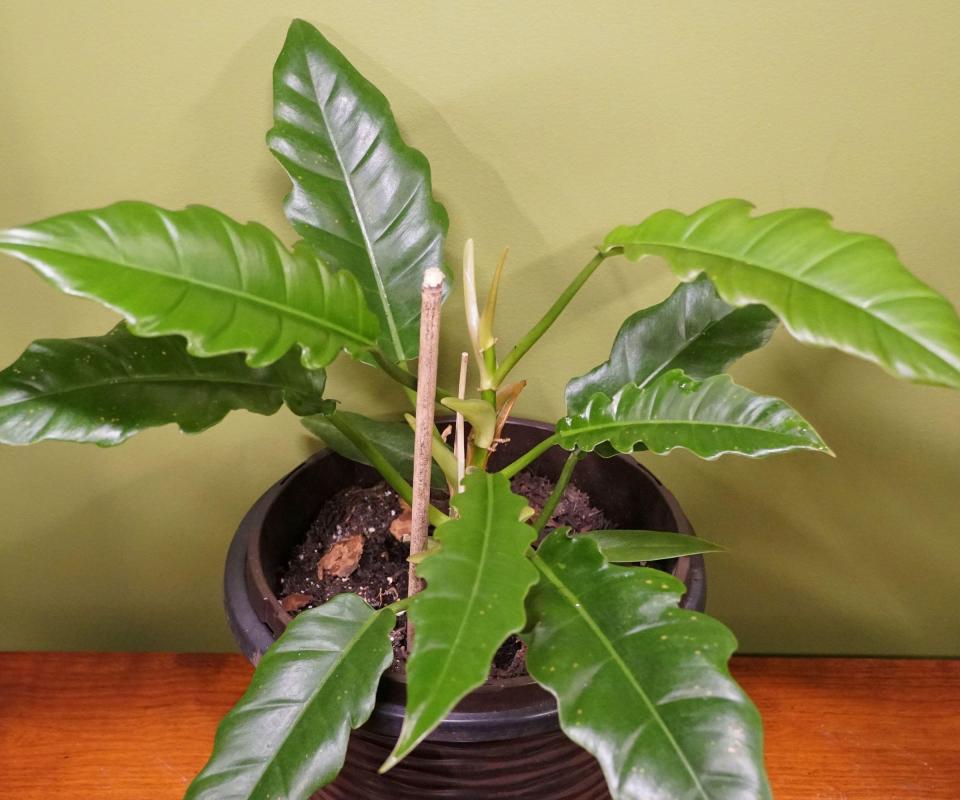
'If you are looking for a low-maintenance houseplant, Jungle Boogie philodendron is for you', suggests Ruth Hayes. This rare plant has long leaves with serrated edges. It is a climber so can be used alongside plant support so it can spread up and out.
Ruth adds, 'To keep the plant healthy and looking its best keep it somewhere light – but out of direct sunlight – it will thrive,' because these plants are accustomed to jungle life, where they grow under dense canopies of trees, receiving little direct light.
How often to water: 'One of the easiest philodendrons to care for successfully, it only needs watering once a week, feeding with a houseplant fertilizer once a month', recommends Ruth.
9. Fiddle leaf fig
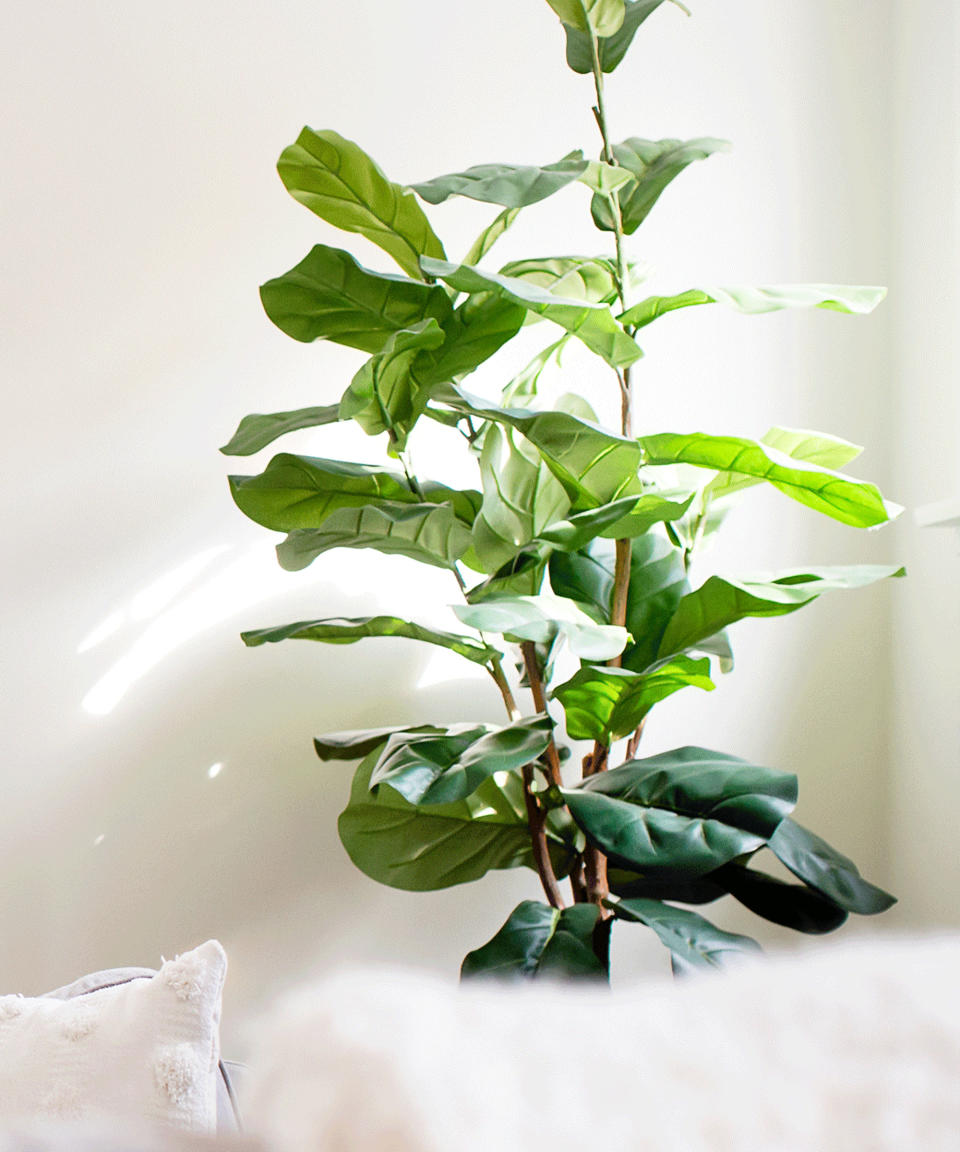
The fiddle leaf fig is a very popular houseplant, which is unsurprising considering it's the perfect large plant to create an impact, reaching up to 6ft tall indoors. If you're wondering how to grow and care for a fiddle leaf fig, well it's surprisingly easy. Keep them in bright but indirect sunlight in temperatures around 65 to 80℉. This plant originates from rainforests in West Africa and is drought-tolerant.
How often to water: When watering a fiddle leaf fig, you should allow the top 2in of soil to dry out before watering again, which normally results in it needing watering around once a week.
You can find Tall Green Fiddle Leaf Fig at Walmart
FAQs
What are the benefits of having indoor tropical plants?
Besides the beauty of them, many indoor tropical plants have air purifying qualities that can reduce blood pressure, headaches and fatigue.
What these indoor plants all have in common, which makes sense considering Joanna Gaines' busy lifestyle, is that they are all easy and low maintenance to grow and keep healthy.
The use of such a wide range of tropical plants in Joanna's living room complements the warm rustic appeal of the room, and what better decoration is there to bring nature into your living room than plants, plants and more plants?

